Sweetfish: An Amazing Summer Delicacy!
James Lau
Posted on July 12, 2024
Share:
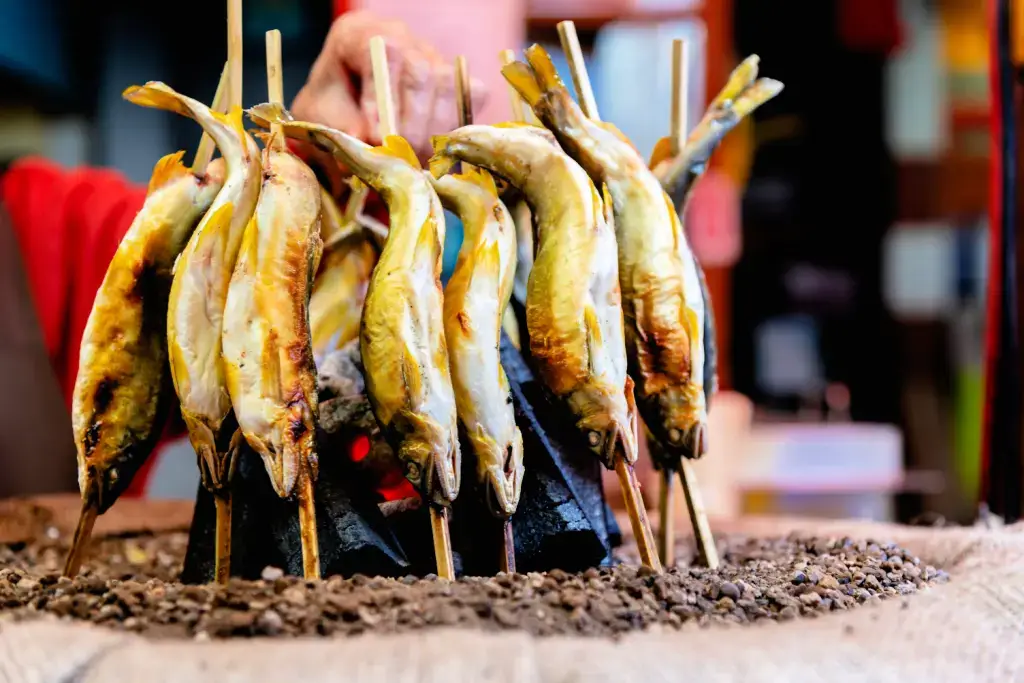
Sweetfish, or ayu, is one of Japan’s best summer foods, known for its delicate flavor. Found in Japan’s rivers, ayu delights locals and tourists alike. Known for its versatility, this fish can be enjoyed in various dishes. Discover why this seasonal delicacy is a must-try on your culinary journey through Japan.
What is sweetfish?
Sweetfish, or ayu, is a small, slender fish that thrives in spotless and clear water. This characteristic has earned it the elegant nickname “the queen of clear rivers” in Japan. The fish is predominantly silver with a darker yellow-green-black tint along its head and spine, and its fins are yellow. Ayu inhabit waters throughout Japan. The fish holds such significance in some regions that Gifu, Gunma, and Nara prefectures have designated it as their prefectural fish.
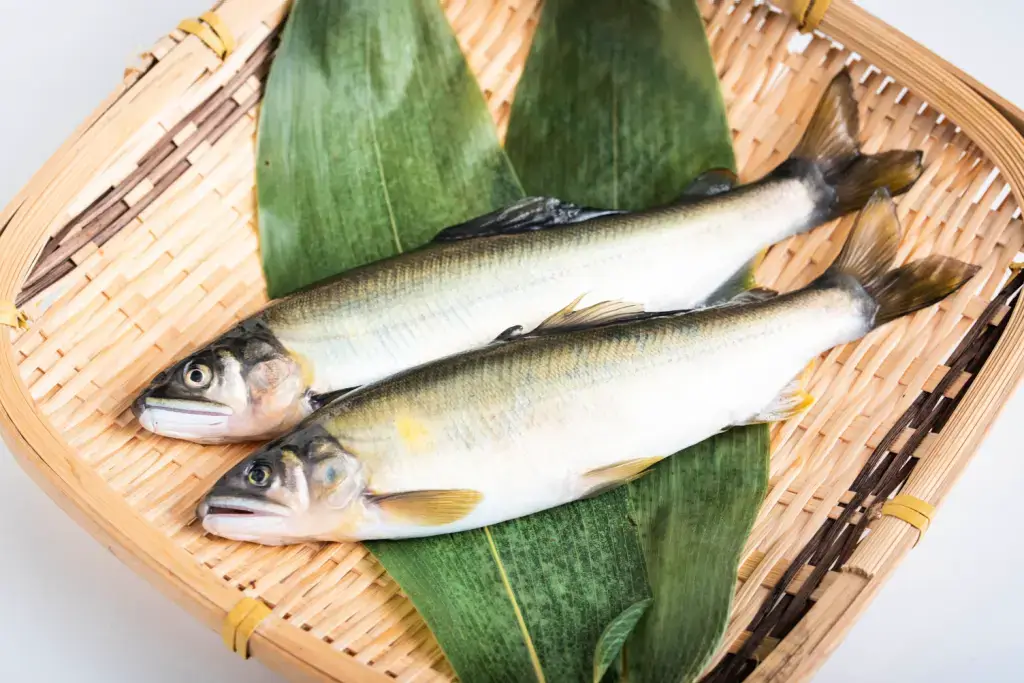
These fish thrive in clear rivers and streams. These clean waters promote the growth of high-quality algae, the primary food source for ayu. In turn, ayu helps maintain the river’s cleanliness by consuming this algae, effectively cleaning the water. Ayu also plays a crucial role in Japanese culture and cuisine. The ayu fishing season, which typically starts in early summer and continues through autumn, generates high anticipation. Recreational anglers and culinary enthusiasts across Japan eagerly await this period.
Why is it popular in Japan?
Sweetfish is a significant part of Japanese culture, especially during the summer. Famous for its fragrant scent and delicate, sweet flavor, fishermen eagerly await ayu as it migrates upstream in spring and grows larger in the summer by feeding on algae near rocks. By fall, it returns downstream to lay eggs, completing its life cycle in just one year. However, this fish’s brief life has made it a symbol of Japan’s seasons and river memories.

People use various traditional and modern fishing methods to catch these prized fish. The most dramatic of these methods is ukai, or cormorant fishing, which dates back over 1,000 years. In ukai, fishermen use trained cormorants to catch the fish at night, guided by the light of flaming torches. This ancient technique is a popular tourist attraction in certain regions despite its declining practice due to modern challenges.
What does it taste like?
Sweetfish generally possess a delicate, sweet flavor that changes with the seasons. In early summer, chefs usually serve young ayu, called waka-ayu, whole as tempura. As a result, the crispy batter contrasts nicely with the soft flesh, making it a popular dish. By midsummer, ayu develops a sweet, watermelon-like aroma when the fish reach their fattest state.
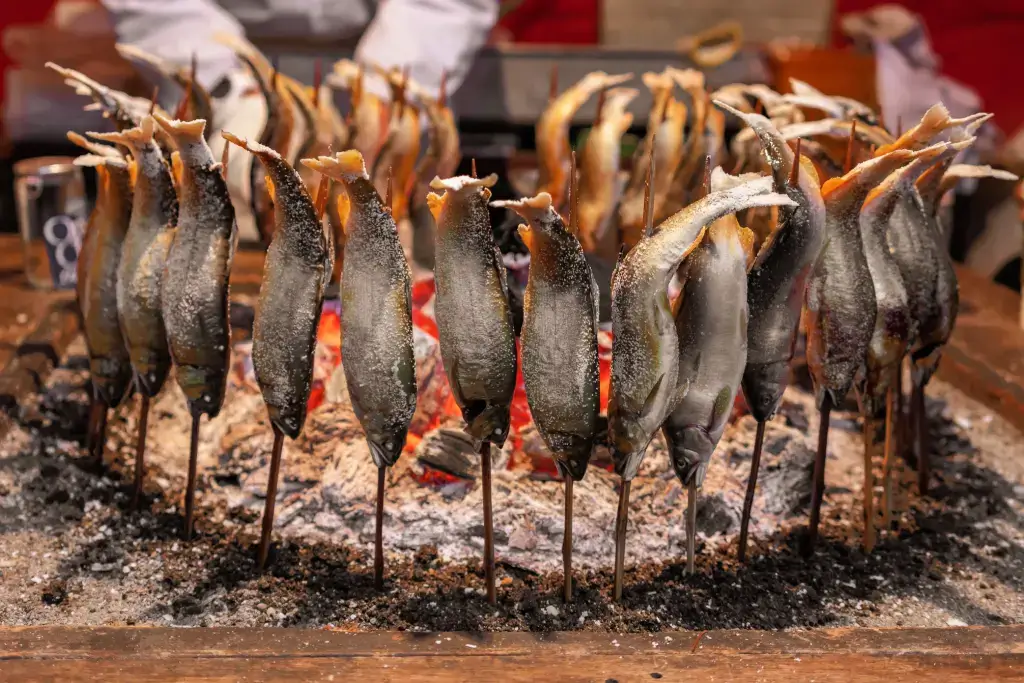
However, as late summer transitions into early autumn, ayu prepare for spawning. People call them komochi-ayu during this period because their bodies contain roe. Additionally, chefs often stew these roe-filled ayu in a sweet miso sauce, creating a rich, umami-packed dish. Therefore, the roe adds a distinctive texture and flavor, making it a prized seasonal delicacy.
Overall, ayu’s taste evolves throughout the year, contributing to its beloved status in Japanese cuisine. This evolution offers diners different flavors and culinary experiences as the seasons change. From the lean, clean taste of early summer to the rich, complex flavors of autumn, ayu provides a year-round gastronomic journey that reflects Japan’s deep appreciation for seasonal foods.
Are you looking for local delicacies from Japan? Check out Sakuraco! Sakuraco delivers traditional Japanese snacks, teas, and sweets from local Japanese makers directly to your door so you can enjoy the latest treats directly from Japan!
How can I enjoy sweetfish in Japan?
Shioyaki Ayu
Shioyaki, or salt-grilled sweetfish, is a traditional Japanese dish that highlights the natural flavors of ayu. This simple yet popular preparation method involves grilling the whole fish with a generous sprinkling of salt. The result is a crisp, savory exterior with tender, sweet flesh inside. Shioyaki is typically enjoyed during the summer when ayu are at their peak. This dish allows diners to experience the unique taste of the fish from head to tail.

The presentation of shioyaki is quite striking, featuring the fish skewered on wooden sticks and grilled over charcoal. This method of cooking enhances the flavor while looking simple. Shioyaki is commonly served at festivals, street stalls, and even on dinner cruises in regions like Gifu. It’s a favorite among locals and tourists alike, because its simplicity lets the quality of the ayu shine, making it a beloved summer treat in Japan.
Ayu-meshi
Ayu-meshi is another Japanese dish that features sweetfish in a flavorful rice preparation. This dish combines ayu’s sweet flavor with steamed rice, blending tastes and textures. The fish is often grilled or broiled before being placed atop a bed of white rice, resulting in a visually appealing golden-brown contrast. Ayu-meshi also features fish that are beautifully arranged to enhance the dining experience.
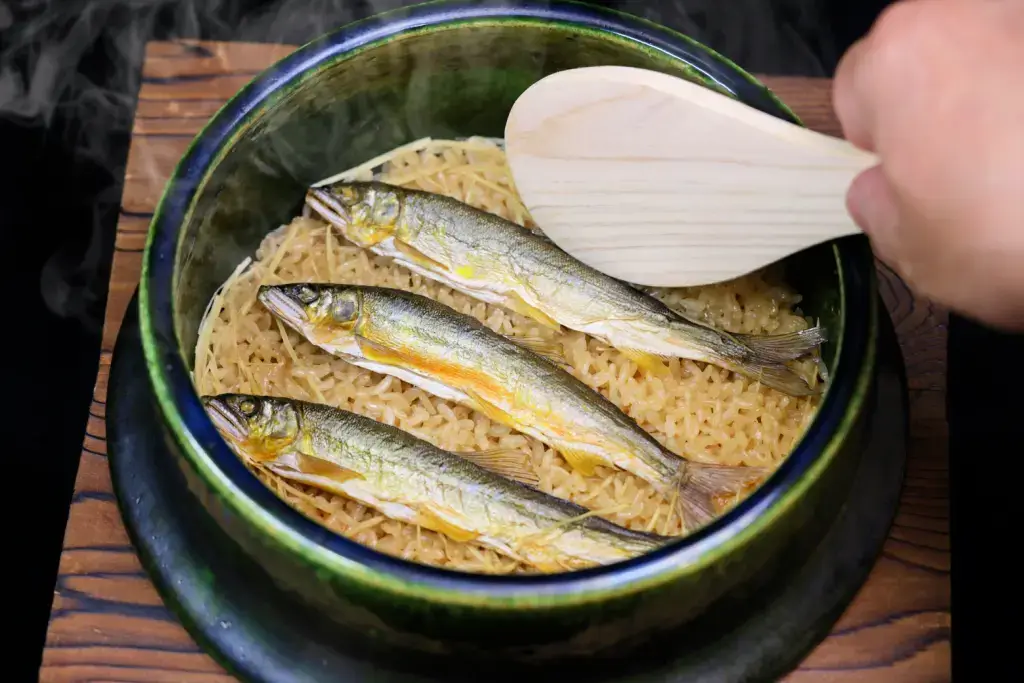
The preparation of ayu-meshi allows the flavors of the fish to infuse the rice, making each bite rich and savory. People also enjoy this dish for its simplicity and elegance, and it is often served in traditional Japanese restaurants and on special occasions. Combining the tender fish with the fluffy rice creates a comforting and satisfying meal. Overall, ayu-meshi showcases the versatility of sweetfish and its ability to elevate a simple dish.
Why should I try sweetfish?
Sweetfish is a culinary experience because its delicate, sweet flavor evolves with the seasons, offering a unique taste each time you try it. From shioyaki to ayu-meshi, ayu dishes showcase the fish’s versatility. Enjoying sweetfish will also connect you to Japan’s cultural heritage like traditional fishing methods like cormorant fishing have been practiced for over 1,000 years.

Not to mention, sweetfish is essential to Japanese summer cuisine, offering taste and cultural richness. Whether you try it as shioyaki, savoring its crispy exterior and tender flesh, or enjoy it in ayu-meshi with its rich, savory flavors, sweetfish will surely delight your palate. Its seasonal versatility and deep-rooted traditions also make it a unique culinary experience. Have you ever tried sweetfish before? How did it taste like? Let us know in the comments below!

Discover authentic flavors with Sakuraco
Get Sakuraco 

Discover authentic flavors with Sakuraco
Get Sakuraco 
Related Articles
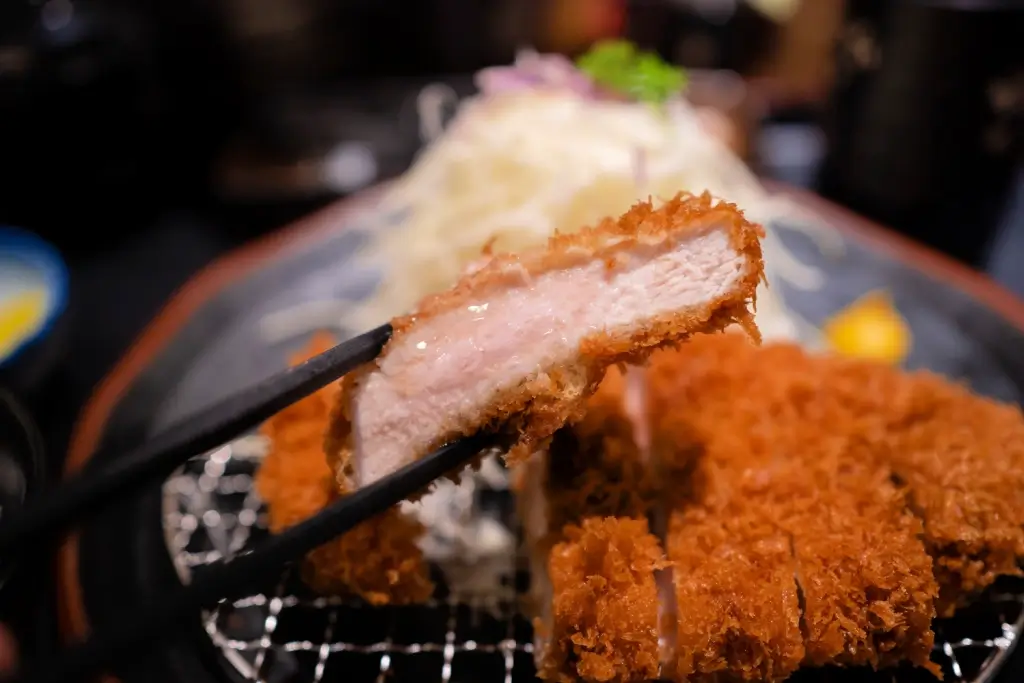
Tonkatsu Luxury Restaurants: Best Ones to Try!
Don’t miss out on tonkatsu if you’re traveling to Japan! Tourists often add the meal to their must-eat list because of its delicious and satisfying nature. Even better, you can elevate the experience by going to luxury restaurants across Japan, where you can experience some of the most celebrated pork cutlets.
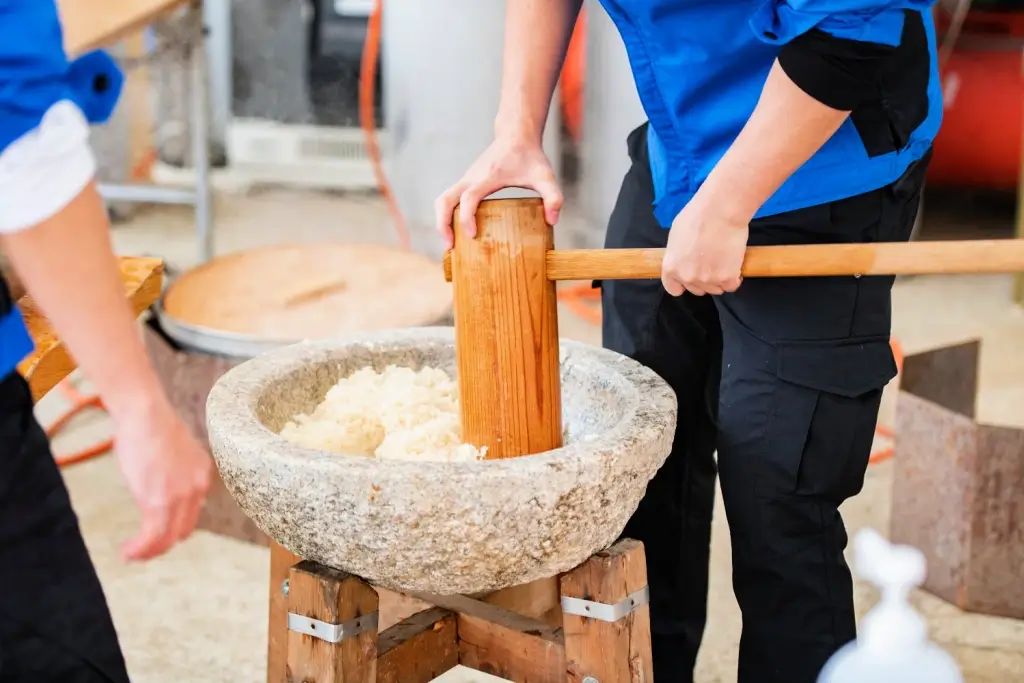
Mochi: How is Mochitsuki Made in Japan?
Mochitsuki is the Japanese tradition of pounding steamed rice to make mochi for the New Year. Families and neighbors gather to participate in this lively and meaningful tradition. The teamwork involved helps everyone feel a sense of connection.
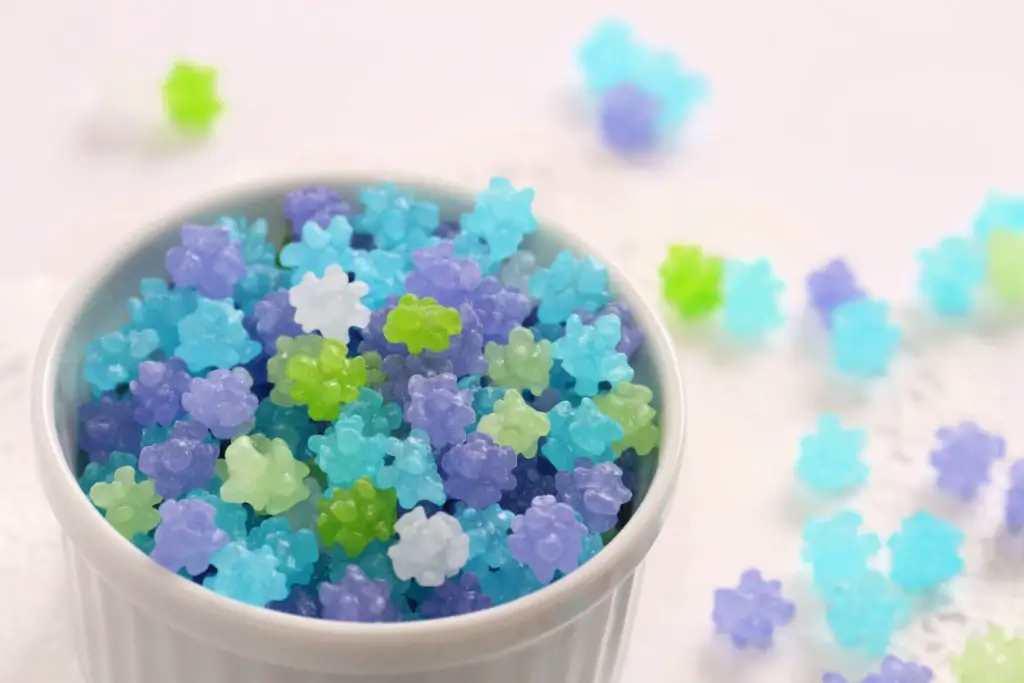
Konpeito Candy: What Makes This Starry Treat Shine?
If you are a fan of the famous Demon Slayer series, then you probably know that the favorite treat of the adorable Nezuko Kamado is those tiny, colorful little sweets.

Kinako: The Amazing Roasted Soybean Powder!
Kinako is a very popular ingredient that can easily be found in many traditional Japanese sweets. It has a distinctive flavor, standing alongside other classic tastes such as red bean or sesame. Let’s explore this charming ingredient together, and who knows, you might even be able to make it in your own beloved kitchen!



